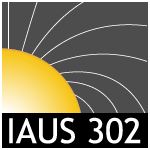A number of maps of the surface magnetic fields of newborn Sun-like stars have now been obtained using the technique of Zeeman-Doppler imaging. Their magnetic fields can be significantly more complex than a simple dipole, the usual assumption of models, and can vary markedly between sources. I will summarize the magnetic field topology information obtained to date and present Hertzsprung-Russell diagrams for the stars in the sample. Intriguingly, the large-scale field topology of a given newborn star, and in particular the strength of the dipole component of its multipolar magnetic field (that which is most important in controlling how the star interacts with its disk), is strongly dependent upon the stellar internal structure. Using the observational data as a basis, I will argue that the general characteristics of the global magnetic field of a newborn, still contracting pre-main sequence, star can be determined from its position in the Hertzsprung-Russell diagram, across which there are four distinct magnetic topology regimes. I will demonstrate that the large-scale magnetic fields of pre-main sequence stars follow similar trends to low-mass main sequence M-dwarfs with similar internal structures. Additionally, I will present evidence that if a solar-mass pre-main sequence star develops a radiative core before its disk disperses, it will enter a period of rapid spin-up. If the empirical magnetic topology trends across the Hertzsprung-Russell diagram are confirmed with additional data, and can be understood theoretically, they may provide a new method of constraining pre-main sequence stellar evolution models.
- Other

 PDF version
PDF version

